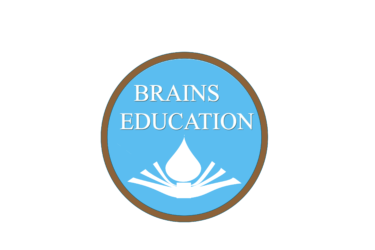PHYSICS
2nd Year Revised 2021-22 (SC )
Unit-I Electrostatics (16 Periods)
- Electric charges and fields:
Electric charge and its quantization, conservation of charge, Coulomb’s law, force between two point charges, force between multiple charges, superposition principle, Continuous change distribution. Electric field due to a point charge, electric field lines, electric field due to a dipole at any point, torque on a dipole in uniform electric field. Electric flux, Gauss’s theorem (statement only) and its applications to find field due to uniformly charged infinite plane sheet, infinitely long straight wire.
- Electrostatic potential and capacitance:
Electric potential, potential difference, electric potential due to a point charge, potential due to a dipole, potential due to a system of charges. Equipotential surfaces, electrical potential energy of a system of two point charges and of electric dipole in an electrostatic field.
Conductors, insulators, free charges and bound charges inside a conductor, Dielectrics and electric polarization, capacitors and capacitance, capacitance ofa parallel plate capacitor with and without dielectric medium between the plates, combination of capacitors in series and in parallel, energy stored in a capacitor.
Unit- II Current Electricity: (14 Periods)
Electric current, drift velocity, mobility and their relation with electric current, Ohm’s law, electrical resistance, conductance, resistivity, conductivity, effect of temperature on resistance, V – I characteristics (linear and non-linear), electrical energy and power. EMF and potential difference, internal resistance of a cell, combination of cells in series and parallel, Kirchhoff’s laws and simple applications. Wheatstone bridge and Meter Bridge. Potentiometer-Principle and its applications to measure potential difference and for comparing EMF of two cells; measurement of internal resistance of a cell.
Unit-III Magnetic effect of Current and magnetism: (16 Periods)
- Moving charges and magnetism:
Concept of magnetic field, Biot-Savart law and its application to find magnetic field on the axis and at the centre of a current carrying circular loop, Ampere’s law and its application to infinitely long straight wire. Straight and toroidal solenoid (qualitative treatment only); Force on a moving charge in uniform
magnetic and electric fields. Force on a current carrying conductor in a uniform magnetic field, force
between two parallel current carrying conductors- definition of ampere, torque experienced by a current loop in uniform magnetic field, moving coil galvanometer- its current sensitivity and conversion to ammeter and voltmeter.
- Magnetism and matter:
Current loop as a magnetic dipole and its magnetic dipole moment, magnetic dipole moment of a revolving electron, magnetic field lines, earth’s magnetic field and magnetic elements. Para-, dia- and ferro- magnetic substances with examples.
Unit-IV Electromagnetic induction and Alternating current: (12 Periods)
- Electromagnetic induction:
Faraday’ laws of electromagnetic induction, motional EMF and current induced due to it, Lenz’s law, Eddy currents, self and mutual induction. 2. Alternating Current: Alternating currents, peak and RMS value of alternating current / voltage, reactance and impedance, LC oscillation (qualitative idea only), LCR series circuit (qualitative idea using impedance triangle), resonance, power in AC circuits, wattles current, Transformer (Principle of working & efficiency).
Unit-V Electromagnetic waves: (02 Periods)
Electromagnetic spectrum (radio waves, microwaves, infrared, visible, Ultra violet, X-ray and gamma rays), including elementary ideas about their uses.
Unit-VI Optics (20 Periods)
- Ray optics and optical instruments: Refraction of light, refractive index, its relation with velocity of light (formula only) total internal reflection and its applications, Refraction at spherical surfaces, thin lens formula, lens makers formula, magnification, power of lenses, combination of two thin lenses in contact, combination of a lens and a mirror, refraction and dispersion of light through prism. Optical instruments: microscopes and telescopes (reflecting) and their
magnifying powers.
- Waves Optics:
Wave front, Huygen’s principle, Interference, Young’s double slit experiment and expression for fringe width, coherent sources, sustained interference of light, diffraction due to a single slit, width of a central maximum, polarization, plane polarized light, Brewster’s law.
Unit-VII Dual nature of Radiation and matter: (06 Periods)
Dual nature of radiation, Photoelectric effect, Einstein’s photoelectric equation, particle nature of light.
Matter waves- wave nature of particles, de-Broglie relation.
Unit-VIII Atoms and Nuclei (12 Periods)
- Atoms:
Alpha- particle scattering experiment, Rutherford’s model of atom, its limitations, Bohr model, energy levels, hydrogen spectrum.
- Nuclei:
Atomic nucleus, its composition, size, nuclear mass, nature of nuclear force, mass defect, binding energy per nucleon and its variation with mass number, nuclear fission, fusion, Radioactivity, alpha, beta and gamma particles/ rays and their properties, radioactive decay law, half life and decay constant.
Unit-IX Semiconductor electronics: (12 Periods)
Energy bands in conductors, semiconductors and insulators (qualitative idea only), p-type, n-type semiconductors, semiconductor diode, V-I characteristics in forward and reverse bias, diode as a half and full wave rectifier (centre tap), efficiency (no derivation).
Junction transistor, transistor action, Characteristics of transistor, transistor as an amplifier (CE configuration), basic idea of analog and digital signals, Logic gates (OR, AND, NOT, NAND, and NOR).
Unit-X Communication System: (06 Periods)
Propagation of electromagnetic waves in the atmosphere, sky and space wave propagation, satellite communication, Need for-modulation, qualitative idea about amplitude modulation and frequency modulation, advantages of frequency modulation over amplitude modulation,
— ALL THE BEST —

